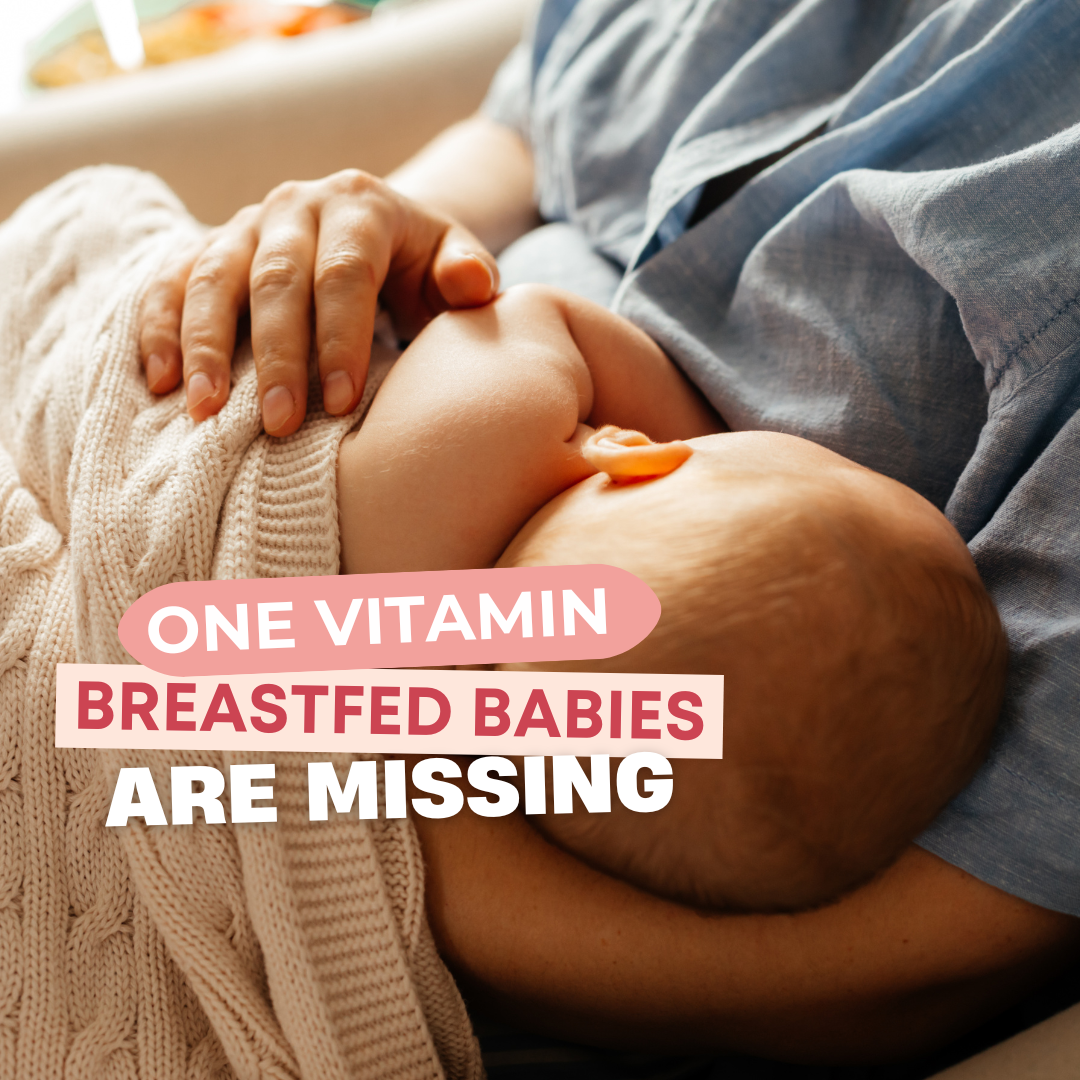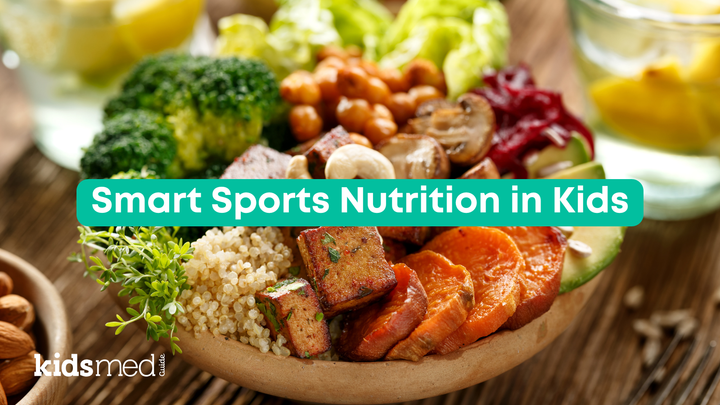What to Know About Vitamin D and Breastfeeding

Breastfeeding your infant throughout the first year or two of life is widely known as the optimal way to feed your baby. The benefits are numerous. But this isn't a post about breastfeeding.
I'm not a lactation expert, but I believe that while breastfeeding provides a preferred nutrient source and has many benefits for mom and baby, it's definitely not for everyone!
Nope, this post is about the necessity of vitamin D supplementation for breastfed infants, including tips on how to give it!
I breastfed my three tiny dinosaurs and had a vastly different experience each time. Each baby and journey are unique, but the need to ensure that those babies get the nutrients they need is universal.
On a personal note, I feel this is an important topic that all pregnant or postpartum moms should know.
In all the excitement and chaos of preparing for a new baby and all the stress that can accompany the early days of breastfeeding, vitamin D supplementation is sometimes forgotten!
Why is Vitamin D Important?
Breastmilk is often called liquid gold or nature's perfect food. That's because it provides an ideal blend of nutrients and antibodies, with the added benefit of emotional bonding. However, breastmilk alone does not provide enough vitamin D for your developing cherub.
Vitamin D is necessary for your baby's growth and development, especially for strong bones and a healthy immune system. A lack of vitamin D can lead to problems like rickets, a condition in which bones become soft and weak, causing deformities and growth problems.
Vitamin D supports bone health and the immune system, protects against infections, and promotes healthy cell function.
Getting enough vitamin D during infancy helps to lay the foundation for your child's health as they grow.
Why do Breastfed Infants Need Vitamin D Supplements?
Mothers get their vitamin D from foods, sunlight, and supplements. Getting enough vitamin D is hard to do in the best of times, and it's even more difficult during pregnancy and postpartum.
Everyone is different, but I know I rarely ate well or saw sunlight during the first months after having babies!
Even if the mom has adequate vitamin D levels herself, breast milk usually doesn't contain enough for a growing baby's needs. Unfortunately, breastfed babies won't get enough vitamin D from other sources like formula supplementation, food, or sunlight (that baby-soft sensitive skin needs to stay out of the sun!).
According to the American Academy of Pediatrics (AAP), exclusively or partially breastfed infants should receive a daily supplement of 400 units (equal to 10 mCg) of vitamin D starting in the first few days of life.
This recommendation is based on extensive research showing that babies who do not receive vitamin D supplements are at higher risk of developing vitamin D deficiency.
The Type of Vitamin D Matters
Did you know there are two different forms of vitamin D?
Vitamin D2, also known as ergocalciferol, and vitamin D3, or cholecalciferol, are both forms of vitamin D in food and supplements. Both are converted in the body through a series of steps to calcitriol, the active form of vitamin D that helps regulate calcium and phosphorous and promote healthy bone growth.
Vitamin D3, or cholecalciferol, is more efficient at converting to calcitriol. It's also a bit more potent and lasts longer in the body. Vitamin D3 supplementation is better than D2 at raising active vitamin D levels. It is the preferred supplementation form for infants and anyone with low vitamin D.
Vitamin D2 will also work, and parents may consider it an option. Vitamin D2 is often derived from plants, whereas vitamin D3 is often derived from animal products. Therefore, vitamin D2 may be a good alternative for families following a vegan or vegetarian lifestyle.
How to Give a Vitamin D Supplement to Your Baby
Babies who are fully or partially breastfed should receive vitamin D supplementation at a dose of 400 units (equal to 10 mCg) per day.
Ideally, supplementation should start in the first few days of life; however, this can be a hectic time. Don't stress if it takes a few weeks to get the hang of things; start when you can.
The good news is that there are tons of options to choose from. Vitamin D is available in liquid form, often with easy-to-measure devices in a "dropper form." This means you can easily measure the 400-unit dose directly into a dropper. Also, most vitamin D supplements are tasteless, and babies won't know the difference!
Whatever product you choose, make sure it is a reputable brand. Look for the "Good Manufacturing Practice" (GMP) stamp of approval on the bottle. This indicates that the manufacturer follows best practices in manufacturing and quality control and voluntarily submits to independent inspections.
To administer vitamin D to your baby, you have a few options:
- Apply the drop directly to the breast while the baby nurses
- Apply the drop to a pacifier or bottle tip
- Apply the drop to expressed milk in a baby bottle
- Add the drop to a favorite pureed food once your baby reliably eats solids
- Apply the drop directly into the infant's mouth
I had the best luck putting my drop of vitamin D on the breast or a pacifier. I tried adding it to the bottle many times, but all three of my kids were picky about bottles and sometimes wouldn't finish them.
However, my strategy changed as they became older infants.
After 7 or 8 months, they would usually finish a bottle, but they'd also be extremely likely to take the pacifier and chuck it on the ground.
One important caveat: The current universal recommendation for adequate supplementation for breastfed infants is 400 units (or 10 mCg) of vitamin D daily. However, if your child has unique or chronic health conditions, talk with your pediatrician to confirm whether this dose is correct for your baby.
Is There an Alternative Method to Supplement With Vitamin D?
Giving a vitamin D supplement directly to your breastfed infant is the first-line recommendation, and it's been around for a long time.
It's safe, accessible, affordable, and easy to do. Knowing that your infant receives this nutrient directly, you can have peace of mind.
Newer research suggests an alternative strategy for parents who do not want to directly give their infants a vitamin D supplement. The lactating mom can supplement with a (relatively high) dose of vitamin D instead.
Investigators found that lactating moms who took a daily dose of 6400 units of vitamin D3 were able to transfer enough vitamin D from their blood to their milk for the infant to get an adequate amount.
Talk to your pediatrician and doctor if you have questions about which method is right for your family. Some things to consider or questions to ask your medical team may include:
- Will I remember to give the supplement to my baby / myself?
- Does mom have a history of kidney stones or a reason to avoid a high dose of vitamin D?
- Does mom have low vitamin D and need to supplement beyond the usual amounts found in prenatal vitamins?
- Does mom already take a supplement with a significant amount of Vitamin D?
- How easy is it to get supplements, and can families afford one option over another?
What Happens if Formula is Introduced or Baby Begins Eating Solids?
Babies may start getting formula supplements for many reasons, especially if mom returns to work, her milk supply declines, or she just needs a breather!
If your baby is partially formula-fed and partially breastfed, they still need vitamin D supplementation.
Introducing solid foods is exciting! But like adding formula into the mix, solid food won't give your baby the optimal amount of vitamin D either.
Keep supplementing with vitamin D until your baby is weaned from breastmilk and gets all their nutrients from food, cow's milk, and/or formula.
If your baby is weaned, over the age of 1, and cannot drink whole cow's milk, read the labels on your dairy-free milk of choice and chat with your pediatrician about vitamin D. Baby may benefit from continuing supplementation!
Conclusion: Vitamin D is an Essential Supplement for Breastfed Babies
Babies need vitamin D for proper bone growth and overall health. It's an essential nutrient! Babies who are fully or partially breastfed don't receive enough vitamin D and need a daily supplement of 400 units (equivalent to 10 mCg).
Select a vitamin D liquid from a reputable manufacturer. Pick a product with a dropper that makes it easy to measure the 400-unit dose. When possible, choose vitamin D3 (cholecalciferol).
Talk to your pediatrician if your baby has unique health needs or chronic conditions to ensure the 400-unit dose is still the best option for them. Also, chat with your doctor if you are interested in maternal vitamin D supplementation instead of infant supplementation.
Keep on nursin' - it's not always easy, and Mom, you rock!
The following references were used to compile this information:
CDC. (2024, April 15). Vitamin D and Breastfeeding. Breastfeeding Special Circumstances. https://www.cdc.gov/breastfeeding-special-circumstances/hcp/diet-micronutrients/vitamin-d.html
Hollis, B. W., Wagner, C. L., Howard, C. R., Ebeling, M., Shary, J. R., Smith, P. G., Taylor, S. N., Morella, K., Lawrence, R. A., & Hulsey, T. C. (2015). Maternal Versus Infant Vitamin D Supplementation During Lactation: A Randomized Controlled Trial. Pediatrics, 136(4), 625–634. https://doi.org/10.1542/peds.2015-1669
Vitamin D, Your Baby, and You. (n.d.). La Leche League International. Retrieved February 13, 2025, from https://llli.org/breastfeeding-info/vitamin-d/
Where We Stand: Vitamin D & Iron Supplements for Babies. (2016, May 27). HealthyChildren.Org. https://www.healthychildren.org/English/ages-stages/baby/feeding-nutrition/Pages/Vitamin-Iron-Supplements.aspx



